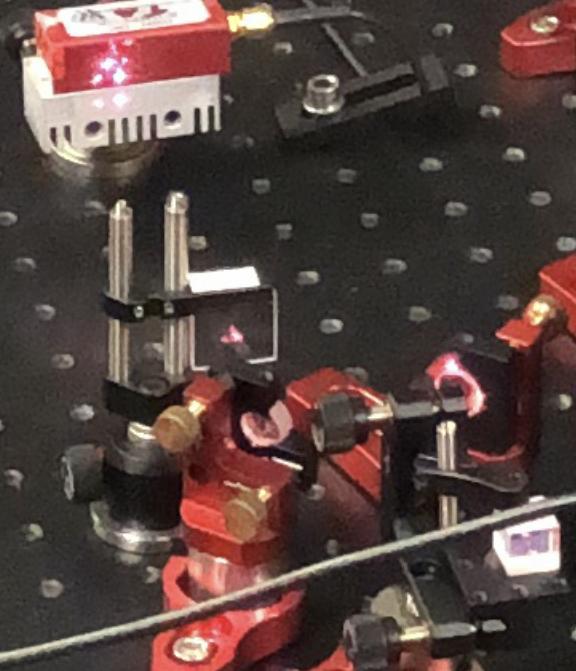The other answers are perfectly correct, assuming specular (mirror like) reflection, that is, elastic scattering (leaving the energy level of photons almost unchanged).
But there is another case which I would like you to consider, that is diffuse reflection, and absorption re-emission.
Diffuse reflection is the reflection of light or other waves or particles from a surface such that a ray incident on the surface is scattered at many angles rather than at just one angle as in the case of specular reflection.
But the above scheme continues to be valid in the case that the material is absorbent. In this case, diffused rays will lose some wavelengths during their walk in the material, and will emerge colored.

https://en.wikipedia.org/wiki/Diffuse_reflection
Now the most important thing about your case, is that the surface on the picture is not only causing specular reflection, but diffuse too. This means, that:
it reflects some photons in random directions
it not only elastically scatters, but absorbs some photons, and re-emits them at different (in your case visible) wavelength. This is the answer to your question. Yes, some of the photons can actually gain energy, and from the incident IR wavelength, they are re-emitted as visible wavelength, and those are the photons that you see with the naked eye.
In some cases under intense illumination it is possible for one electron to absorb two photons allowing for the emission of radiation of a higher photon energy (shorter wavelength) than the absorbed radiation
https://en.wikipedia.org/wiki/Fluorescence
The question is an interesting one, and the only way to test this is to do this with different objects. If the laser itself is invisible to the naked eye (is truly IR and not in the visible range), but if you shine the laser on the wall or other objects, the dot might become visible, because of diffuse reflection and absorption re-emission, where some photons are re-emitted in the visible range (you can even do fluorescence).


